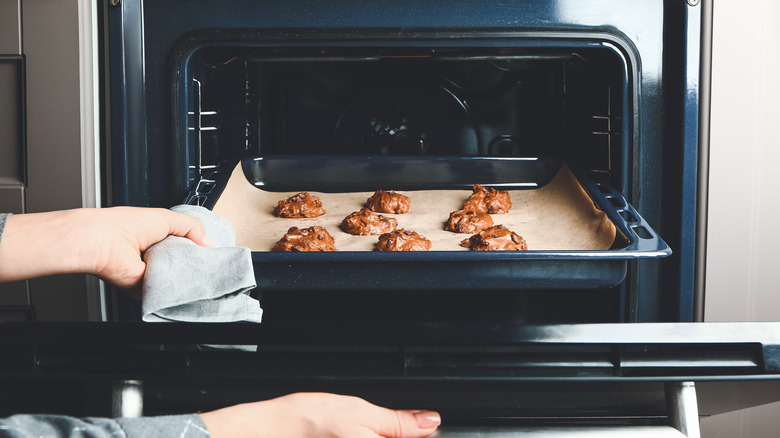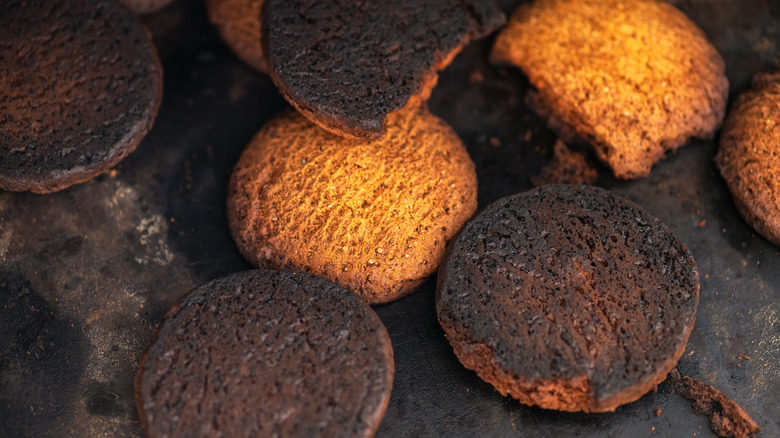The Reason You Should Avoid Using Aluminum Foil To Bake Cookies
Baking cookies from scratch can be like walking on eggshells. Any slight changes you make, whether that be using melted butter instead of softened butter, or forgetting to scrape the bowl, can result in a vastly different cookie than what you may have intended. But it's not only the ingredients that you have to be mindful about. The oven temperature, which rack you use, and what material you bake your cookies on also play a role.
According to Better Homes & Gardens, it's best to use a light-colored cookie sheet with only one raised edge. Ones with four raised sides limit air circulation, and ones that are dark-colored are prone to overbaking due to heat retention. Sally's Baking Recipes also points out that using a silicone baking mat or sheet of parchment paper will yield a more evenly browned cookie compared to an unlined pan greased with butter or oil. But not all liners are alike. If you don't have either parchment paper or a silicone baking mat, don't reach for aluminum foil as an alternative, All Recipes advises.
Aluminum foil affects how cookies bake
Aluminum foil doesn't just function as a nonstick surface. It's also a conductor of heat, All Recipes explains. Though the material is useful for many recipes, cookies are not one of them, because it causes unevenly baked cookies. Any part of the dough that touches aluminum foil will heat much faster than the rest, and this results in cookies that are browned on the bottom, but underdone on top. By the time the top has the chance to finish baking, the bottom will be burnt.
If you insist on using aluminum foil with cookies, there are a couple necessary adjustments to minimize the chance of them burning on the bottom. Per Baking Kneads, you'll first have to set the oven temperature five degrees lower. Because aluminum foil conducts heat, the cookies reach a hotter temperature a lot faster. For the same reason, you'll also have to take the cookies out of the oven at least two minutes earlier. To more effectively control the doneness of your cookies, however, a non-conductive material like parchment or silicone is always the ideal option.

